PFAS and Emerging Contaminants
Navigating PFAS and emerging contaminants to enhance health and safety, ensure regulatory compliance and maintain business continuity

What are PFAS and What We Bring
Per- and polyfluoroalkyl substances (PFAS) are long-lasting synthetic chemicals commonly used in industrial and household products. They do not degrade naturally and can be found in supply chains, water, and the environment due to widespread manufacture, use and release.
We offer extensive expertise in environmental remediation and water treatment, including identifying and assessing PFAS sources, assessing and addressing contamination pathways, and evaluating, designing and implementing multi-media treatment techniques. With over 15,000 colleagues worldwide serving the water, environment and advanced manufacturing sectors, we have a deep understanding of the state of the science and regulations, allowing us to guide our clients towards the best solutions for managing liabilities. Our industry-leading technical experts are actively involved in innovation, research and development initiatives to find next-generation solutions for the PFAS challenge.
Did you know?
-
15 K+
estimated PFAS compounds
-
320 K
Tons of total PFAS produced annually globally
-
27 K
Tons of PFAS disposed of in the U.S. 2018-2023
-
120 K+
U.S. PFAS sites
-
> 70 M
Americans with PFAS impacted water
-
97 %
Americans with PFAS in their blood
The PFAS Challenge and Lifecycle
The lifecycle of PFAS begins with their production at chemical plants, followed by their inclusion in various consumer and industrial products. When these PFAS-containing products are disposed of, they can leach from landfills and contaminate groundwater. Additionally, firefighting foams containing PFAS can pollute soil and groundwater. Due to their chemical properties, PFAS can travel extensively in groundwater, ultimately affecting surface water bodies and potentially contaminating drinking water sources. When wastewater is treated, PFAS can become concentrated, leading to contamination of biosolids.
The widespread presence of PFAS requires organizations to implement comprehensive solutions to remove these substances from products, processes and supply chains or to remediate environmental and water contamination. Achieving this requires holistic approaches that span various sectors and business boundaries.
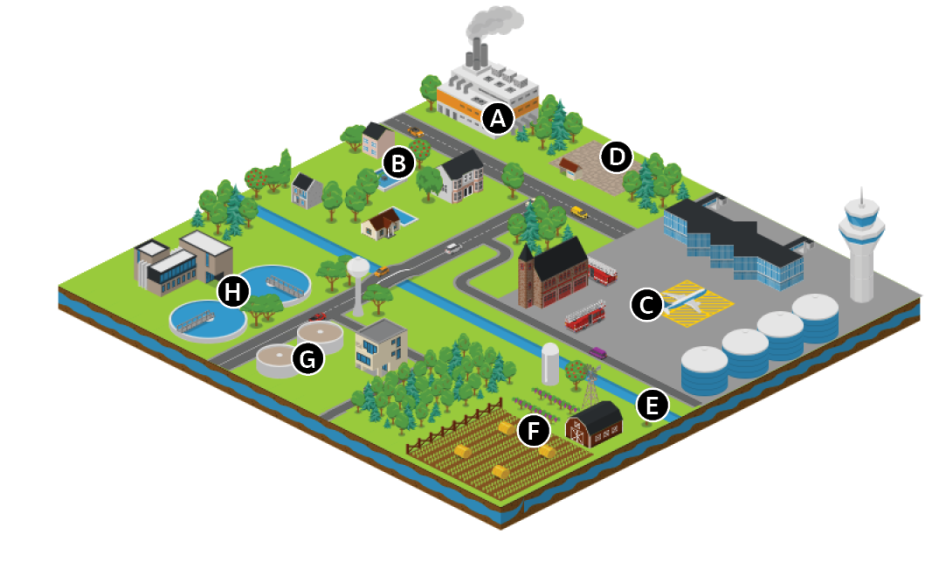
A: Production & manufacturing: During PFAS production and downstream use, discharges or spills can lead to multi-media contamination.
B: Consumers: PFAS are used in common household products that can be traced in the human body and linked to various medical conditions.
C: PFAS in firefighting foam: Deployments of aqueous film forming foam (AFFF) can lead to groundwater, surface water and/or soil contamination.
D: Landfills: PFAS may leach from contaminated materials placed in landfills, impact groundwater and escape containment structures.
E: Contaminated soil, groundwater and surface water: PFAS released to the environment can impact soil and travel long distances in groundwater.
F: Biosolids: Biosolids used as fertilizer on farms leach into groundwater or run off into surface water bodies.
G: Water treatment plants: Drinking (G) and wastewater (H) treatment plants must remove PFAS to very low concentrations.
Our holistic cross-market PFAS solutions
-

Production, supply chains and manufacturing
Challenges: PFAS producers and downstream manufacturers must identify where PFAS-containing materials are present in their supply chains and processes and identify safe, sustainable alternative materials while maintaining business continuity.
Our solutions: Risk assessment and mitigation, supply chain analysis, alternative material analysis
-
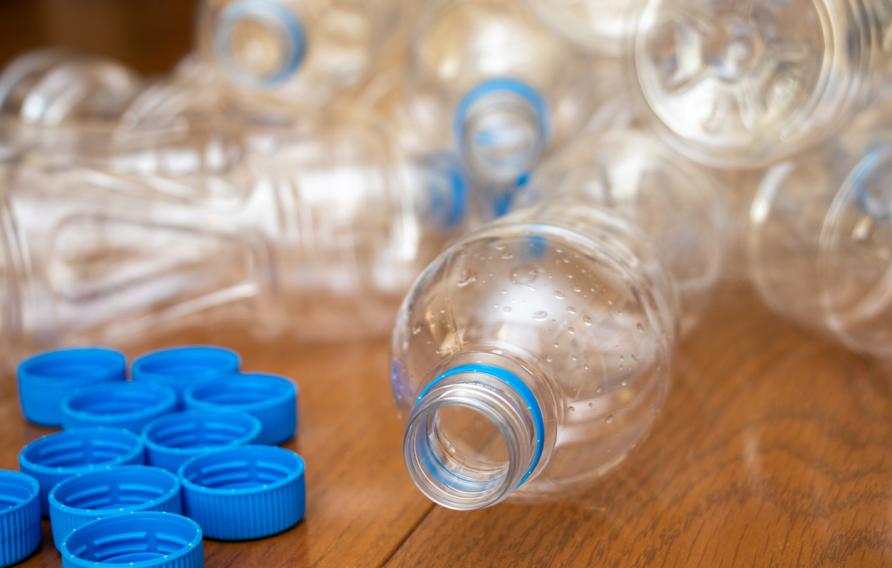
Industrial and consumer applications
Challenges: PFAS producers and downstream manufacturers must identify where PFAS-containing materials are present in their supply chains and processes and identify safe, sustainable alternative materials while maintaining business continuity.
Our solutions: Risk assessment and mitigation, supply chain analysis, alternative material analysis
-

Environmental restoration and revitalization
Challenges: PFAS that have been released to the environment must be remediated, treated or removed before they reach receptors, such as aquifers and water bodies. Organizations must understand and act on their PFAS risks and liabilities before regulations force action.
Our solutions: Assessment, characterization, remediation design, risk assessment, PM/CM, O&M
-
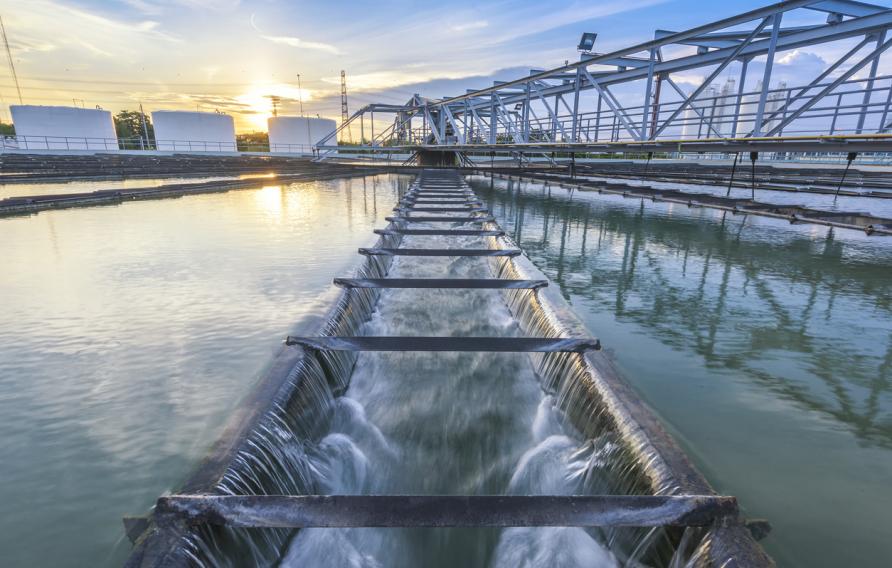
Drinking, waste and industrial water treatment
Challenges: PFAS that have contaminated drinking, waste and industrial water streams, as well as biosolids, must be removed or treated to ensure the health and safety of the public and ecosystems. Municipal, federal and commercial organizations must achieve and maintain compliance as regulatorily mandated criteria become enforceable.
Our solutions: Planning and assessment services, technology evaluation and cost estimating, bench- and pilot-scale testing, design, PM/CM, O&M, turn-key design-build alternative delivery.
Meet our team
-

Chrissy Thom
Global Environmental Market Director
-

Susan Moisio
Global Market Director, Water
-
Sharon Minchak
Global Director for Environmental Remediation
-

Russell Ford
Global Director for Drinking Water & Reuse
-

Dora Chiang
Global Principal for PFAS and Emerging Contaminants, Environment
-
Geoff Hood
Director of Land Quality, Europe
-

Brad Simmons
Technical Director - Contaminated Land, Australia
-

Chris McCarthy
Senior Principal Technologist - Ecological Risk Assessment
-

Katie Walker
Global Principal for PFAS
Contact us
You might be interested in...
-
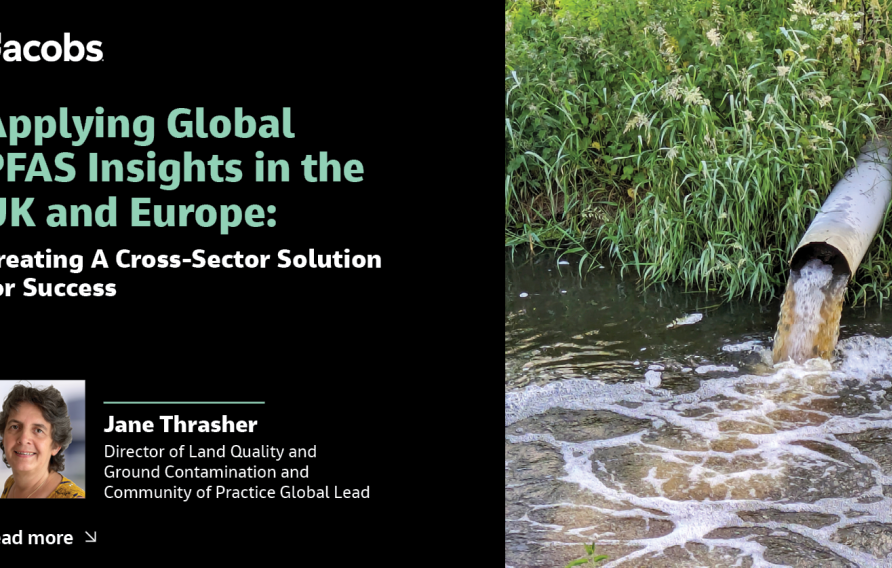 News
NewsApplying Global PFAS Insights in UK and Europe: Creating A Cross-Sector Solution for Success
The rising impact of per- and polyfluoroalkyl substances is arguably the greatest remediation and regeneration challenge our world has faced in the last 50 years. Add in the complexity of fast-changing regulation and compliance, and we’re collectively facing a moving, morphing target — just like the chemicals that make up PFAS. The answer lies in an innovative mix of talent, technology and industry collaboration, and Jane Thrasher, director of land quality and ground contamination, is pioneering the ideal formula.
-
 Showcase
ShowcaseWoodbury PFAS Water Treatment Project
Jacobs is working with the City of Woodbury, Minnesota to design one of the largest drinking water treatment facilities for PFAS removal in the U.S.
-
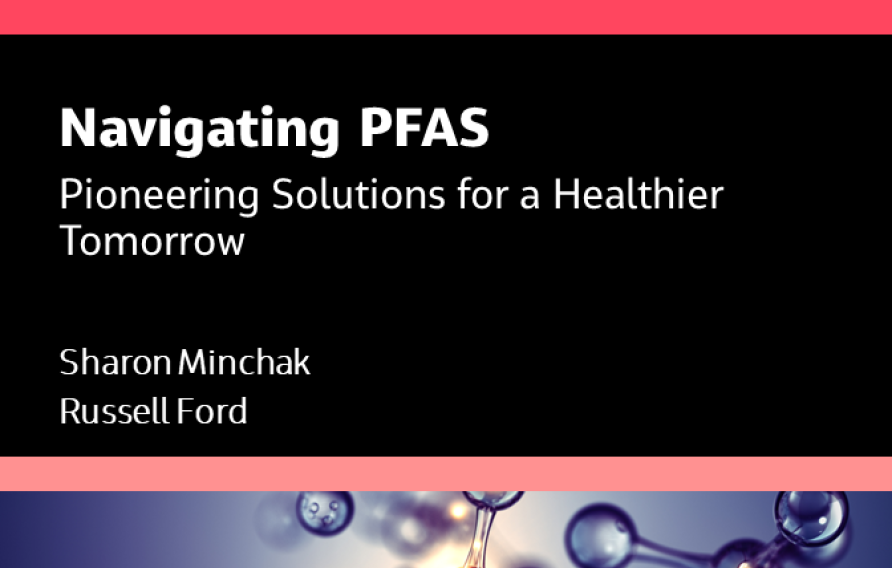 Podcasts
PodcastsNavigating PFAS: Pioneering Solutions for a Healthier Tomorrow
How are PFAS affecting your work and our world? Per- and polyfluoroalkyl substances are a large class of long-lasting, synthetic chemicals used extensively in industrial and household products. Many PFAS don’t degrade readily on their own, and some are highly mobile in the environment. They can be found worldwide in water, soil, air, plants, animals and even our bloodstreams. We’re still uncovering the full impact of these chemicals on the health of humans and our environment, but here’s what is clear: it’s a complex challenge at scale to remediate these so-called “forever” chemicals. Our guests are defining the solutions for clients and the industry: <b>Sharon Minchak</b>, Global Solutions Director for Remediation and Regeneration at Jacobs, and <b>Dr. Russell Ford</b>, Global Director for Drinking Water & Reuse Solutions at Jacobs.
-
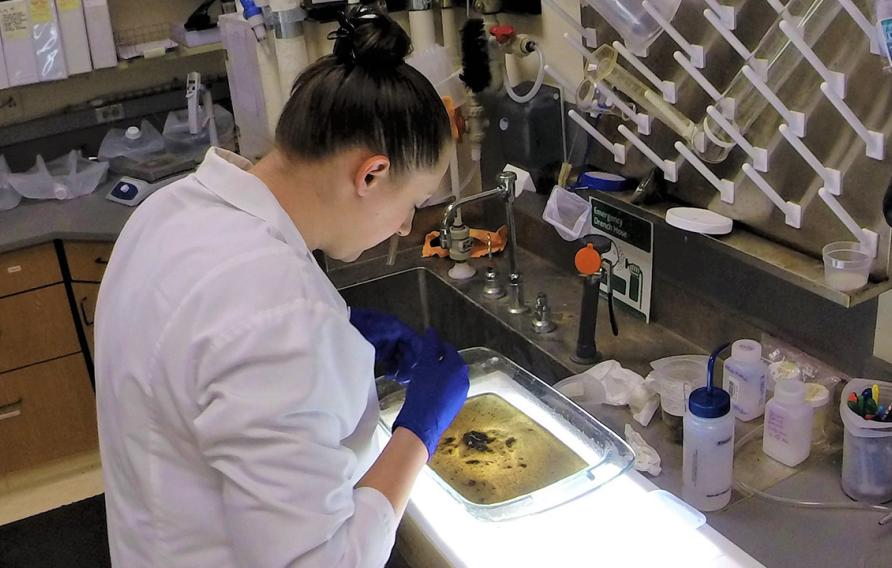 News
NewsUnderstanding Risks from Exposure to Per- and Polyfluoroalkyl Substances (PFAS)
Per- and polyfluoroalkyl substances (PFAS) have been detected around the globe in drinking water, in various media at release sites, in human blood serum and in nonhuman biota tissue. Because of the difficulty of breaking the carbon-fluorine bond, PFAS are persistent and widely dispersed in the environment. The risk assessment challenge for scientists, regulators and the environmental consulting community is that are thousands of types of PFAS, some of which have been more widely used and studied than others.
-
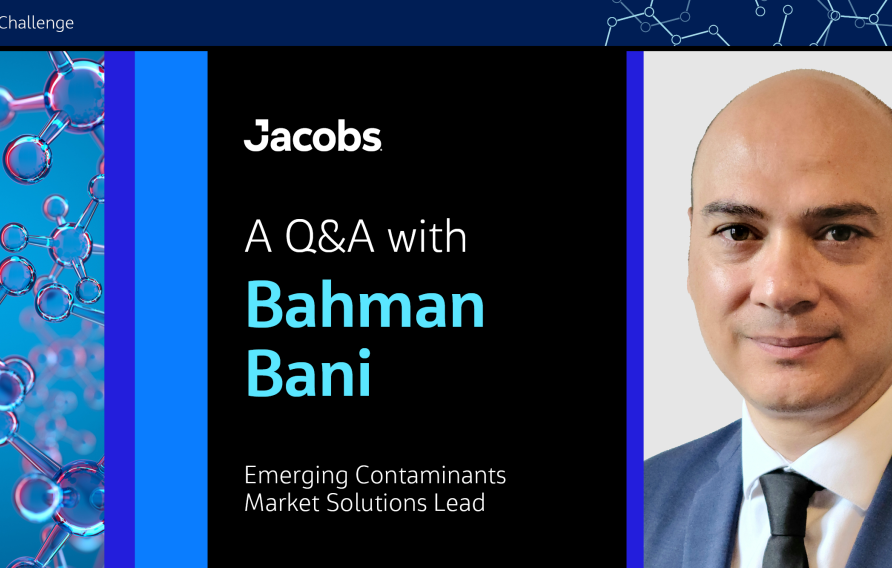 News
NewsA View on the Future of PFAS Liability: A Q&A with Bahman Bani
The contamination of per- and polyfluoroalkyl substances (PFAS) is one of the greatest chemical remediation challenges in the world right now and PFAS regulation and compliance is rapidly changing to adapt to the true scale of the problem. Pioneers and problem-solvers like Bahman Bani, Jacobs' senior environmental remediation engineer, are helping to discover the best way forward for clients and communities.
-
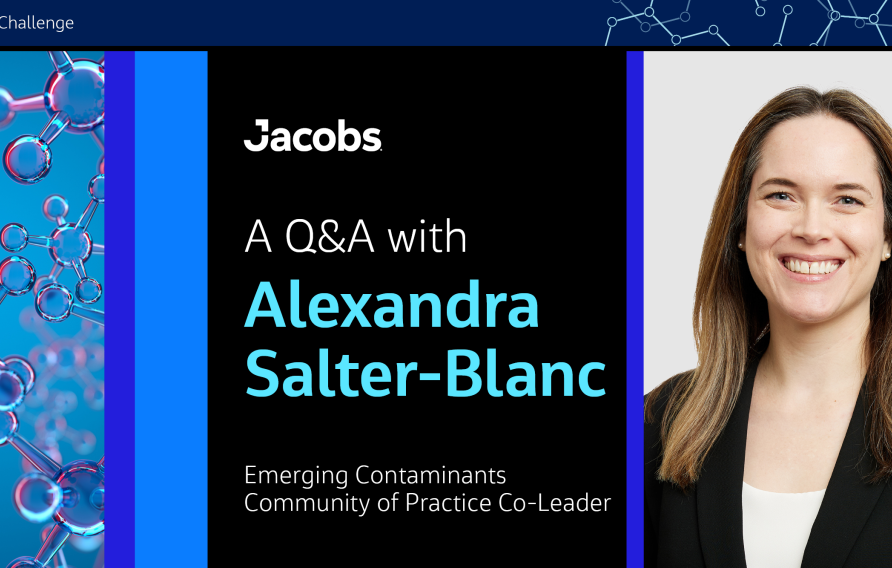 News
NewsA View on the Future of PFAS, Emerging Contaminants: A Q&A with Ali Salter-Blanc
One of the most critical challenges in chemical remediation globally is addressing the growing impact of per- and polyfluoroalkyl substances (PFAS) and providing practical solutions. Emerging Contaminants Community of Practice Co-Leader, Ali Salter-Blanc, shares her deep insights and industry experience.
-
 News
NewsA View on the Future of PFAS: A Q&A with Dora Chiang
Our Global Principal for PFAS and Emerging Contaminants explains how Jacobs is developing characterization, treatment and remediation solutions for per- and polyfluoroalkyl substances (PFAS) amidst a rapidly evolving regulatory environment.
-
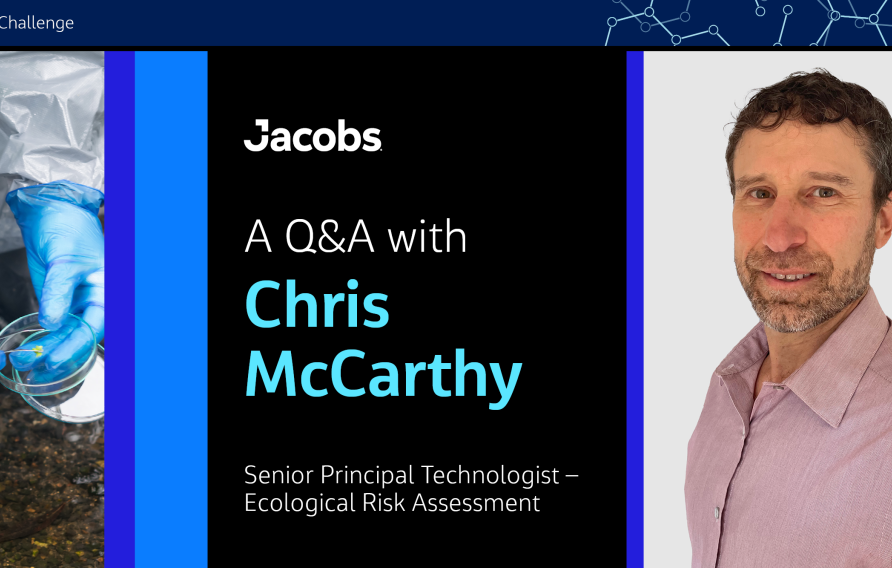 News
NewsA View on the Future of Ecotoxicity: A Q&A with Chris McCarthy
The magnitude and breadth of the PFAS challenge are increasing. Successful remediation hinges on measuring and understanding the chemical cost and effect of these toxins, and Senior Principal Technologist Chris McCarthy is leading the way. Read on to learn more about his industry-leading insights.
-
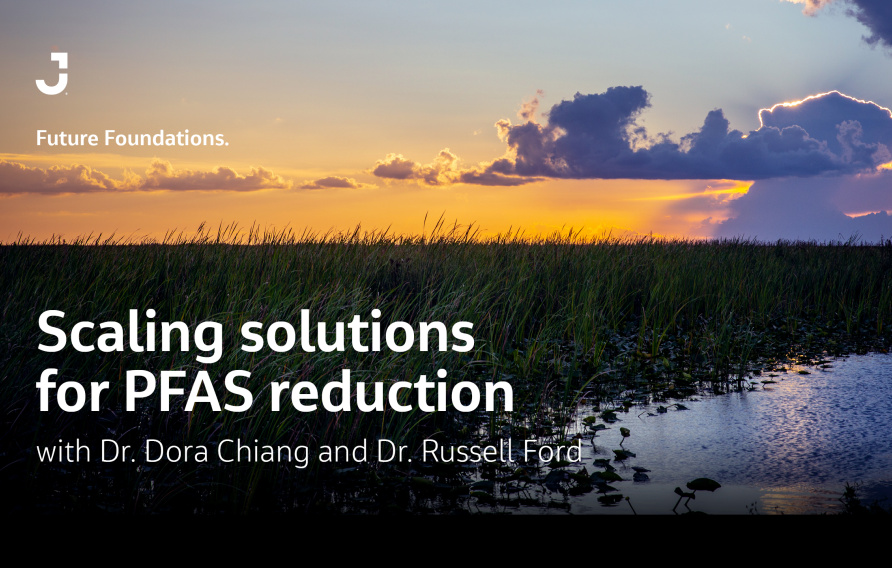 News
NewsScaling Solutions for PFAS Reduction
Decisive action is needed to reduce the risk of PFAS-containing products and their impact on human health and ecosystems. By working collaboratively, we can manage PFAS across its full lifecycle, from phase-out of specific products to site remediation, drinking water treatment and waste management.
-
 Showcase
ShowcaseJack Garland Airport Remediation Project
Improving the health and safety of the City of North Bay and its citizens by tackling PFAS contamination
-
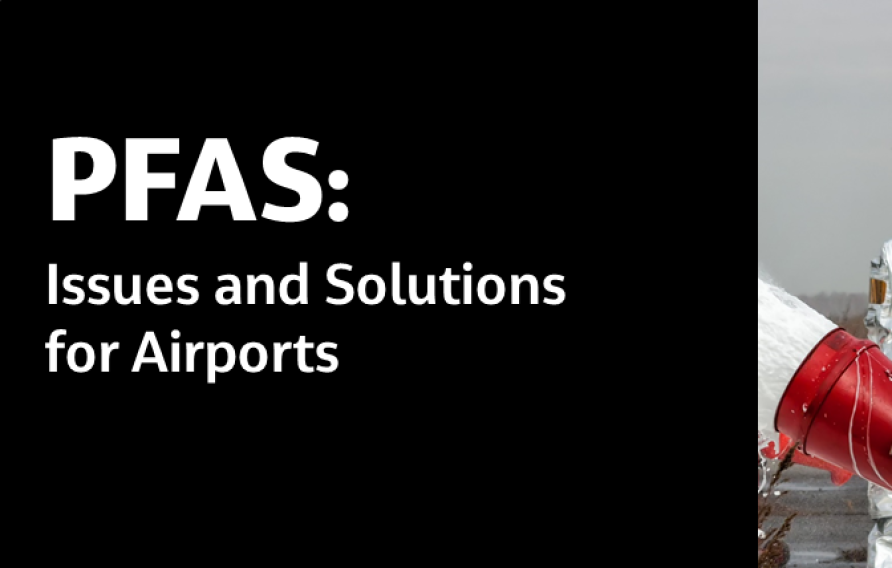
 Podcasts
PodcastsPFAS: Issues and Solutions for Airports
Over the past several years, there has been a surge in regulatory interest to address the public health and environmental risks from releases of per- and polyfluoroalkyl substances (PFAS), including use of aqueous film-forming foams (AFFF) for firefighting or training. This call to action has resulted in rapid development of regulations and guidance, at both the federal and state level, which are impacting the airport community. In this episode of If/When, our guests are Jacobs’ Vice President of Aviation for the Americas, Steve Pelham; Principal Hydrogeologist, Jacobs’ Aviation Environmental Lead, Bob Cipolletti; and Principal Hydrogeologist, Jacobs PFAS Global Technology Leader, Bill Diguiseppi.
-
 Podcasts
PodcastsTackling the Environmental Challenge of PFAS
Per- and polyfluoalkyl substances (PFAS) are a large family of organic compounds with widespread use and persistence in the environment. In this episode of Inflection Points, Jacobs Global Environmental Market Director Jan Walstrom and Jacobs Global Water Market Director (Retired) Peter Nicol discuss the source and nature of PFAS chemicals, why they’re a growing public health concern and treatment and remediation solutions for impacted soil, groundwater and drinking water.















































